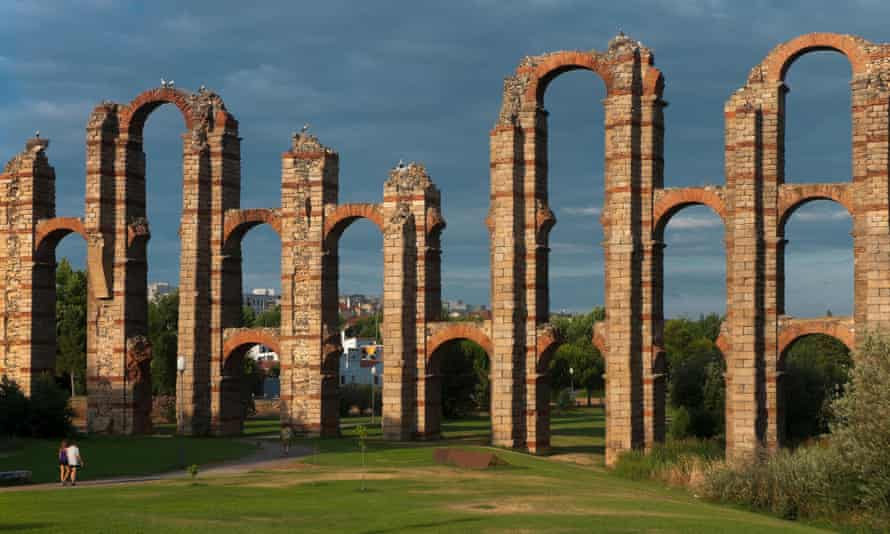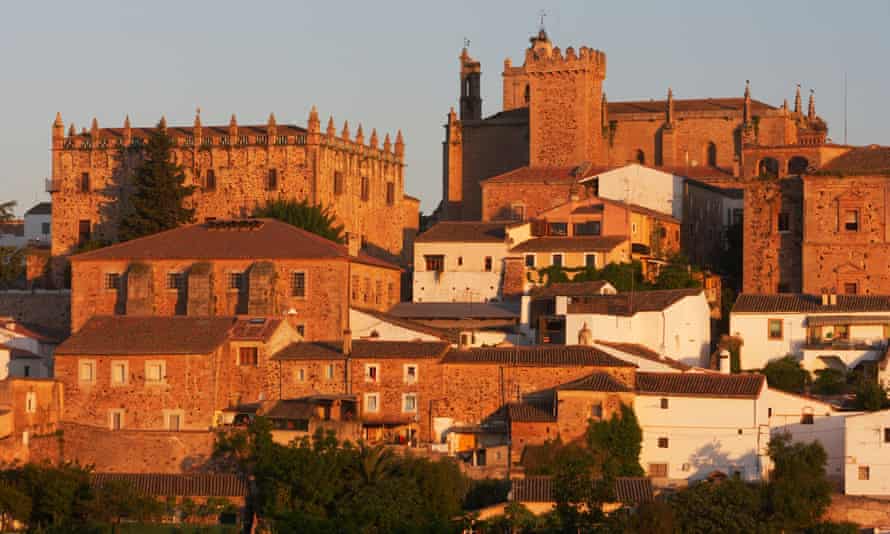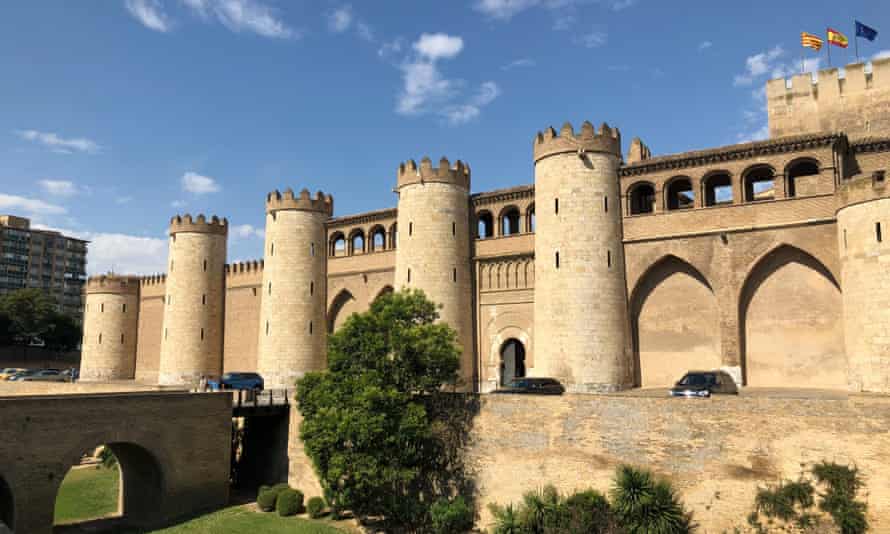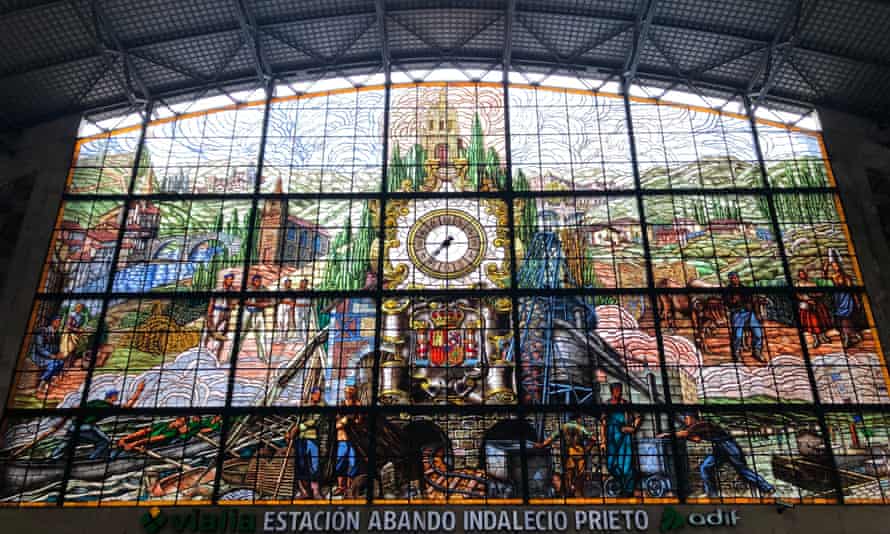Shared from www.theguardian.com
Spain was a slow starter with trains. Its first tracks, between Mataró and Barcelona, covering about 20 miles, were laid in 1848, 18 years after the world’s first intercity line, between Manchester and Liverpool. And because a different track gauge was selected from the “standard gauge” of most of the rest of Europe (partly owing to fear of the new railways being used by an invader), this led to a longstanding requirement to change trains at the French border, resulting in huffy passengers and a stagnation in trade.
Railway tracks, some still serviced by steam trains, did cover most of the country by the time of Francisco Franco’s death in 1975, although Spain was by then way behind France, where the inaugural high-speed TGV line, between Paris and Lyon, was to open in 1981.
Post-Franco, great investment has gone into Spanish trains, especially a network of high-speed lines using standard gauge – the first of which was laid to coincide with Seville hosting Expo 92. Now the country has more than 2,000 miles of such railways, more than any other European nation.
The secret to exploring Spain by train, however, is to avoid all these shiny, bullet-nosed Alta Velocidad Española (AVE) newcomers – as wonderful as they may be – and stick to the country’s regional lines. Do so, and sleepy towns and villages await across dusty plains, towering mountains and remote valleys, as I found while researching my book Slow Trains Around Spain: A 3,000-Mile Adventure on 52 Rides. Here are three of the best.
Ruins and ravines: Mérida to Almadén

From the track into Mérida in the hot south-western region of Extremadura, you are treated to one of the finest views from any train in Spain. Having crossed a parched plain into the remote city, the carriages clatter slowly into Extremadura’s capital, where the remains of a magnificent Roman aqueduct rise.
Through gaps between towering columns of orange-hued brick, windows of azure sky are framed, and it is hard not to marvel at the structure’s miraculous longevity as well as its striking presence. A crumbling reminder of an ancient civilisation, seen through the carriage windows.
This is just one of the Roman attractions of Mérida, once a place of peaceful retirement for the centurions of Hispania. You can see it from the station platform, from where the trains move eastwards across yet more arid landscape to the little-visited old cinnabar-mining town of Almadén.
Catch an early morning train and beams of tangerine and pink sunlight bathe the countryside at the beginning of this two-and-a-half-hour journey, covering 135 miles. This works out at a leisurely 54mph, though you may wish the carriages moved even slower, such is the ride’s beauty.
On the outskirts of Mérida, vineyards and olive groves taper across the sun-baked golden soil before brilliant expanses of sunflowers open out, followed by coppery cornfields and a sea of cereal. Deer dart from thickets. Birds of prey soar. Passengers (just a couple of others, usually) put aside phones and papers, eyes transfixed on the scenery as morning begins in Extremadura.
It is not long before hills arise with valleys occupied by strange, shiny new “crops”. These turn out to be fields of solar panels, which, up close, look like the sides of skyscrapers laid flat. There are hardly any settlements to speak of, just the odd farmstead. This region is home to 26 inhabitants per square kilometre, though it seems even fewer from the train.

The landscape is alive with interest as we roll into badlands of ravines and tumbleweed. Here is the beginning of the Sierra Morena mountains, with their shards of towering granite and steep, rocky slopes. Startled sheep wobble across crumbling pastures in the lowlands. Others rest in the shade of trees, occupying every inch of darkness. The result is bizarre, as though freak snowstorms have struck beneath the branches.
The train continues across a succession of gorges with rivers lined by pink ribbons of flowers growing from rhododendron-like bushes. The effect is extraordinary, too. With the land all around so arid and rocky, it looks as though the waterway has somehow turned pink. Salvador Dalí, you feel, would surely approve.

Through a cut in the hills, the carriages arrive at the ochre structure of Almadén station, where a grey cat with inscrutable green eyes rests on the platform, regarding disembarking passengers. Flies buzz. A stationmaster blows a whistle. Not much else is going on.
Hop off here (avoiding the cat’s bowl of milk on the platform), hitch a ride (as I did), catch a taxi or walk (about an hour downhill), and a taste of small-town Spain awaits: somnolent squares, tiny tapas bars, sun-baked labyrinthine lanes.
The highlight in Almadén is the old cinnabar mine, long closed but now offering tours of where the valuable ore used to produce mercury was once found. Down in dark, dripping tunnels beneath the hills, it feels a long way from the costas.
Deserts and mountains: Almería to Granada

Starting on the south coast, this out-of-the-way line takes you northwards and upwards into the mountains, covering 100 miles over nearly three hours on one of Spain’s most visually captivating rides.
Almería, on the eastern side of Andalucía, is often overlooked despite being home to a splendid cathedral, an ancient Moorish castle (the Alcazaba, in pride of place atop a hill) and the Cable Inglés (English pier). This extraordinary steel-and-wood structure is a former railway pier built to help shift iron, copper and silver from mines run by the British and French, which it did from 1904 to 1973. When it’s lit up at night, it looks as though a giant tanker has pulled into the old port.
Aside from these sights, Almería is also worth a detour on a Spanish train adventure for a local tradition of serving “free” tapas with each drink ordered at bars (you still have to pay for the drinks, obviously).
Trains to Granada set off from an ugly modern warehouse of a station next to a disused, incongruously glorious station dating from 1895, with lovely Moorish-style brickwork (you cannot help wondering how the new architects got it so wrong).
From here, the train slowly rises, passing acres of plastic greenhouses used to grow fruit and vegetables. This part of the Spanish coast is aptly nicknamed the Mar de Plástico (Sea of Plastic).
Yet it is not long before you are rolling into the quite different scenery of the Desierto de Tabernas, considered by some to be Europe’s only proper desert. This was where many of the spaghetti westerns were filmed, a semi-arid land of gullies, shrubs and steppes, home to scorpions, snakes and spiders aplenty. The average summer temperature is 40C in the shade. You can follow in the footsteps of Clint Eastwood and Lee Van Cleef on organised tours from Almería which visit the sets of Sergio Leone’s A Fistful of Dollars and The Good, the Bad and the Ugly.
From the carriage window, with the train’s air-conditioning keeping you cool, it is pleasant and intriguing to watch this part of Europe that does not feel like Europe at all slipping by. Prickly pear cacti line the tracks. Abandoned wooden settlements come and go. Dusty terrain spreads out into the distance, where mountains begin to rise. These, on the train’s left-hand side, are the Sierra Nevada. Soon the track moves closer to the glistening white peaks; snow is usually present even during the height of summer. Somewhere out there, beyond the ridge to the north-west, is the Sierra Nevada ski resort, one of Spain’s best.

The landscape begins subtly to alter after the train moves beyond the Desierto de Tabernas. Fields of purple and emerald crops have been planted and wind turbines on a ridge resemble giant thistles. This is the run-up to the small city of Guadix (population 18,000), a former Roman and Moorish stronghold notable – from the vantage point of the train – for its unusual spiky rock formations upon which houses have been built, some of the rooms carved cave-like within the rocks.
After Guadix the line follows a viaduct, before rising and curving to the west around the mountains: cue many more great views on the left, which is definitely the best side for this ride.
By the time the train has arrived at Granada, the altitude is 740m. Quite a climb from the coast. From the station to the centre is a 20-minute stroll, where one of the greatest sights in Spain awaits: the ancient fortress-palace of the Alhambra.
Storks, Goya and Orwell: Zaragoza to Huesca

This is a short one, 46 miles, taking just over an hour, from the capital of Aragon northwards to the small city of Huesca, close to where George Orwell was shot and almost died during the Spanish civil war – as he describes so vividly in Homage to Catalonia. This battlefield has become part of a little-visited Ruta de las Trincheras de Tierz (Route of the Tierz Trenches) hiking trail, and it was the target of my train ride.
There is plenty to detain the curious train traveller passing through Zaragoza, the fifth-largest city in Spain and roughly halfway between Barcelona and Madrid. Forming a triangle of attractions are the 11th-century Aljafería palace (a Moorish dream of marble passages and courtyards), the Cathedral-Basilica of Our Lady of the Pillar (where the Virgin Mary is said to have descended before Saint James), and the Museo Goya, where the walls are alive with images by the local boy done good.
Appropriately, the train to Huesca departs from Zaragoza-Goya Station – a far cry from the city’s enormous station for high-speed AVE trains on the outskirts of town. Zaragoza-Goya is tiny and underground, complete with murals of Goya’s paintings to brighten things up (although, in all honesty, it is still a bit dingy).
Never mind, though, as the old-fashioned, homely little train – just two carriages, its window curtains adorned with tassels – is soon rising out of the tunnel, offering sweeping views of the Cathedral-Basilica, before entering a wide-open plain planted with golden cereal crops.
Ridges rise on the horizon, while in the foreground your attention is drawn to a succession of storks sitting on nests balanced on old telegraph poles. These birds turn to regard the train’s slow progress, looking like bored policemen who’d rather not be on duty and would prefer us to move along now please.
This the train to Huesca does, dutifully (and slowly), leaving the disapproving creatures behind and passing across a gritty, parched plateau where narrow ravines plunge mysteriously into the shadowy depths of Aragon. Jagged mountains appear to the north and it is noticeable that the train is on an upwards slope – at 488 metres, Huesca is twice the altitude of Zaragoza.
This is a fantastically peaceful ride while it lasts – pottering along, curtain tassels swaying – though you are soon on the outskirts of Huesca, where an announcement is made in Spanish and English: “Please do not forget your luggage.” Whereupon the train pulls into a modern terminus with a large tapas bar facing the platforms.
Huesca station tends to be either frantic or completely dead, depending on the timetable. After the mad rush for the return train to Zaragoza, anyone considering where to go next can expect excellent advice from the Renfe (national train operator) staff in the little ticket information office. And if you mention your interest in Orwell, you may soon find yourself discussing the writer. “Oh, Orwell! He put Huesca on the map!” said a security guard, overhearing my chat with the ticket assistant.
It is about an hour’s walk to the village of Tierz, east of the sleepy centre of Huesca, where the Ruta de las Trincheras leads up a hill upon which Orwell initially “took it for granted I was done for” one morning in May 1937. No Nineteen Eighty-Four or Animal Farm, if his estimation had been correct. Thank goodness he made it.
Slow Trains Around Spain: A 3,000-Mile Adventure on 52 Rides, by Tom Chesshyre, is available now (Summersdale, £9.99). To support the Guardian and Observer, order your copy at guardianbookshop.com
Images and Article from www.theguardian.com

